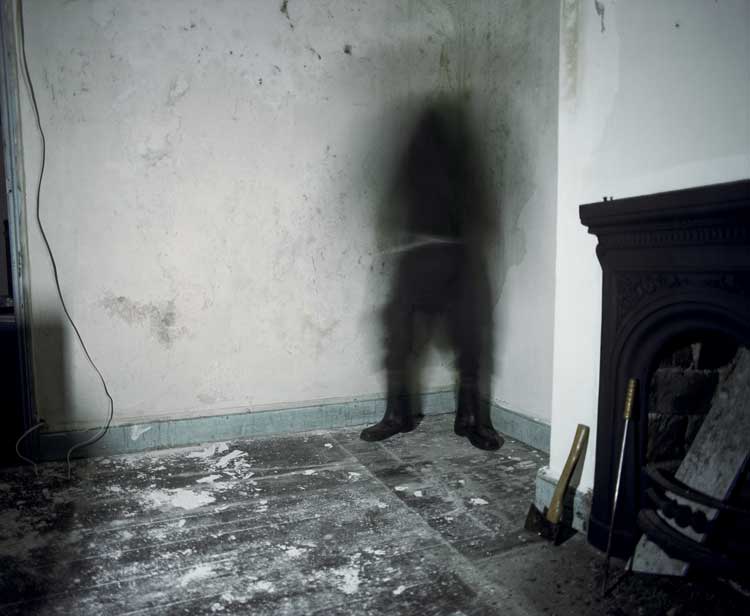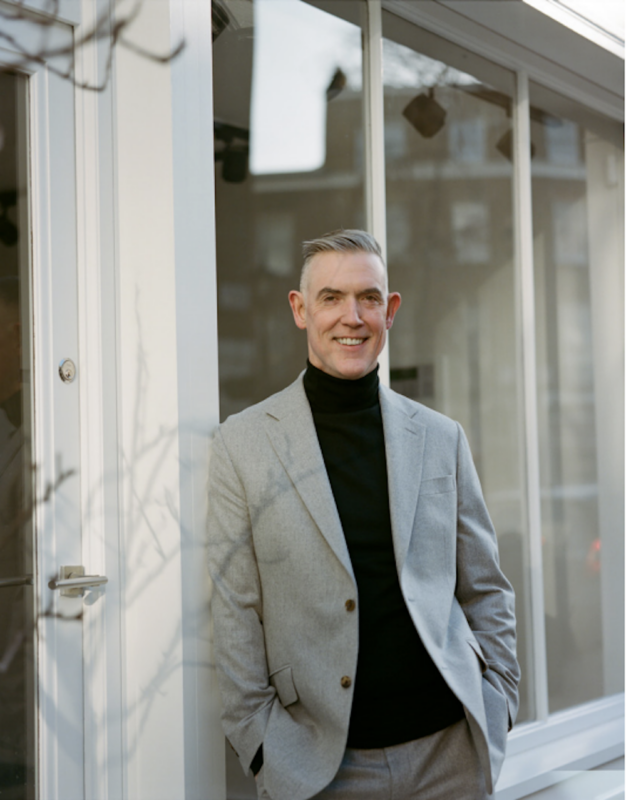 Image: Untitled by Alessandra Sanguinetti from On the Sixth Day
Image: Untitled by Alessandra Sanguinetti from On the Sixth Day
Between Two Worlds opened at Edel Assanti on Wednesday 23rd March. Curated by Evening Standard photography critic Sue Steward, the exhibition oscillates between worlds of fantasy and reality seen through the lens of the 9 contemporary South American photographers it draws together. Ostensibly divided into the “real” on the first floor and the “fantastic” above on the second, the photographs witness the poignant, the daily and the fantastic in their journey across South and Central America.
Hanging the images in this way initially hints that the culture captured is dichotomous and contradictory, either wholly concerned with the facts of day-to-day existence or removed and meandering through a quasi dream world. What in fact emerges throughout is a heady coalescence of two of the invigorating forces of Latin American culture, a culture which, through the lens of these 9 photographers, falls between two worlds.
There is a sensitive sublimity to Alessandra Sanguinetti‘s works On the Sixth Day, is drawn from her dual experience of Argentina, having grown up with her feet in both worlds, living between Buenos Aires and her father’s rural farm. Hesitating just before or just after the creation of man on the sixth day, animals become the focus of these images. In her depictions of rural life there is almost a defiance of the gruesome which threatens to come to the fore – in one, a skinned greyhound, feet removed and strung up from a post, the other foregrounding hands with blood being washed from them, obscuring a dog which watches on in the background, just out of focus. The images position us empathicitally with the animals portrayed, on the latter we view the action level with the dog but from the other side. Hung with the first floor “real” images, the pieces form a neat pair in our minds with Marcos Lopez‘ Carnicera, grouped with the “fantastic” images of the second floor. Hyper real in its depiction of the Carnicera (butcher) the vivid red and white of the meat crowds the background as she stares solemnly, meat cleaver bloodied and raw, exposed bone clenched. The image contrasts sharply with the stillness of Sanguinetti’s pieces, and in the light cast by contrast, neither image appears completely real nor entirely otherworldly, but falls somewhere between.
 Image: Piel Island #1 by Edouard Fraipont
Image: Piel Island #1 by Edouard Fraipont
This movement of contrast and re-evaluation happens continually throughout the exhibition, with later images casting a new light on those seen before. Nowhere is this as apparent as in Edouard Fraipont‘s diptych Piel Island. The first image encountered speaks restlessness, a bed with a dark blurred shape at its centre. Of the images, Fraipont said their effect was concerned with “losing sight of a body in motion by pushing the limits of photographic technique”. This body in motion, at first perhaps a restless sleeper that spends the course of a night in perpetual movement, is entirely transformed by its accompanying piece, hung directly above but removed on the next floor. In Piel Island #2 the perspective is shifted to the corner of the same room, and in it an indistinct blurred figure stands. What is distinct is black wellingtons and an axe, both changing the tone of the two images, crystalising the quietly lurking sense of forboding. As such, though the bed image is grouped as “real” the figure in the corner as “fantasy”, it is in fact the second image which imposes a reading of the situation, and, whether nightmare vision or reality, what the threat of the second suggests becomes the reality which sets the motion and tone of both.
Image: Piel Island #2 by Edouard Fraipont
Oscar Fernando Gomez Rodriguez‘ 12 street photographs accumulate street scenes which pop with intensity. This documentary is a drive around Monterry, Mexico capturing the events and people of the city. These real scenes are given a cinematic quality by the recurrent frame of the car window, removing photographer and viewer from the immediacy of the scenes, succumbing to voyeuristic fantasies as they stumble across and discover the real. These images were originally intended for Rodriguez’ daughter, “so she could see what I see”, his daughter died but he continued to photograph the city. Image: Oscar Fernando Gómez Rodríguez, 24 de mayo 09 (078)
Image: Oscar Fernando Gómez Rodríguez, 24 de mayo 09 (078)
Similarly poignant and charming are Juan Pablo Echeverri‘s Mucho Macho series and Dulce Pinzon‘s The Real Story of the Superheros both employ and recontextualise motifs of the macho hero, the first the wrestler, the second the “superhero”. Mucho Macho captures the evolution of an individual’s multiple identities, fueled by popular culture, aspiration and delusion. Shot every day over eight years, the self portraits show Echeverri change costume, gender and personality as the notion of a concrete identity collides with the fragmented and kaleidoscopic world of popular culture. In contrast, Pinzon’s images of Mexican workers in their work environments, but incongruous in superhero costumes, removes them from the “real” whilst heightening an unseen truth, the fantasy costumes in fact tell a truth about is the the reality of their work, here depicted as heroin, this visual motif empowering.
The pace and tone of this exhibition alters and oscillates rapidly, with comparissons cast between pieces, destabilising our readings and forcing a repositioning of each image, neither “real” nor “fantastic” but rather, falling between two worlds.
Exhibition is at Edel Assanti Project Space until April 30th










